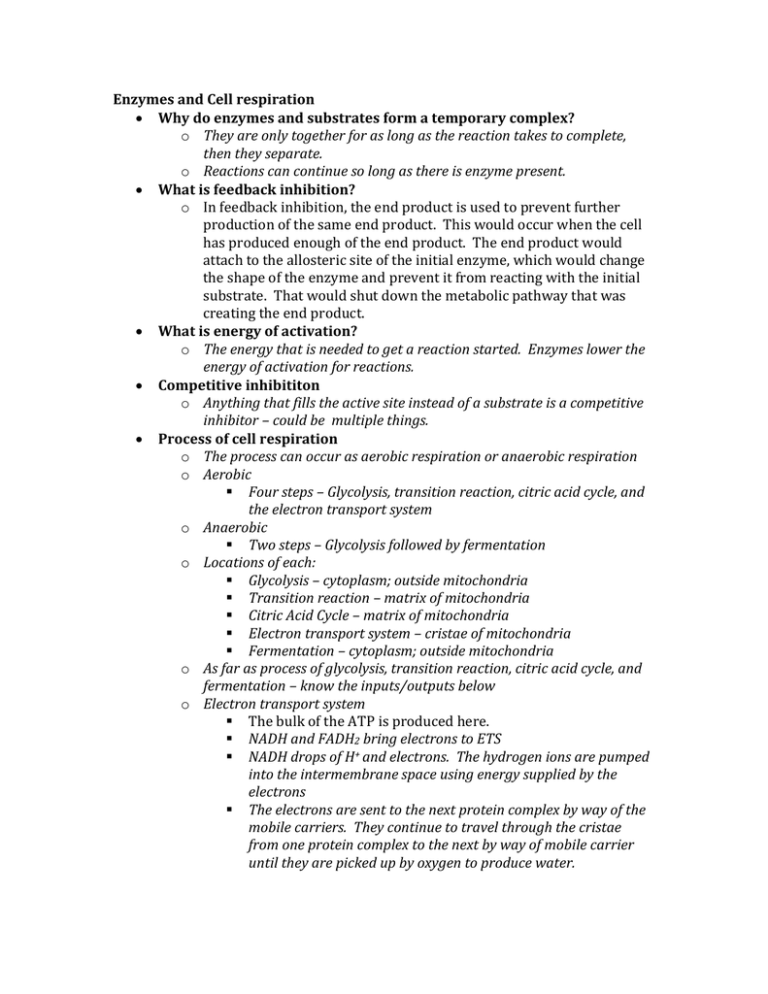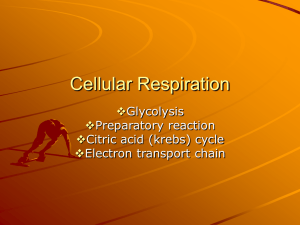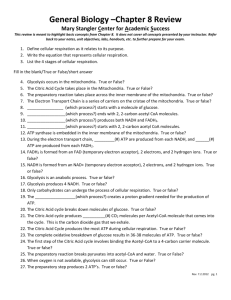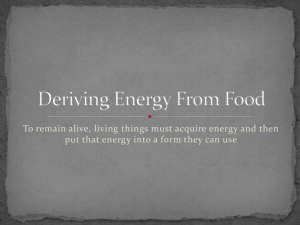Enzymes and cell respiration
advertisement

Enzymes and Cell respiration Why do enzymes and substrates form a temporary complex? o They are only together for as long as the reaction takes to complete, then they separate. o Reactions can continue so long as there is enzyme present. What is feedback inhibition? o In feedback inhibition, the end product is used to prevent further production of the same end product. This would occur when the cell has produced enough of the end product. The end product would attach to the allosteric site of the initial enzyme, which would change the shape of the enzyme and prevent it from reacting with the initial substrate. That would shut down the metabolic pathway that was creating the end product. What is energy of activation? o The energy that is needed to get a reaction started. Enzymes lower the energy of activation for reactions. Competitive inhibititon o Anything that fills the active site instead of a substrate is a competitive inhibitor – could be multiple things. Process of cell respiration o The process can occur as aerobic respiration or anaerobic respiration o Aerobic Four steps – Glycolysis, transition reaction, citric acid cycle, and the electron transport system o Anaerobic Two steps – Glycolysis followed by fermentation o Locations of each: Glycolysis – cytoplasm; outside mitochondria Transition reaction – matrix of mitochondria Citric Acid Cycle – matrix of mitochondria Electron transport system – cristae of mitochondria Fermentation – cytoplasm; outside mitochondria o As far as process of glycolysis, transition reaction, citric acid cycle, and fermentation – know the inputs/outputs below o Electron transport system The bulk of the ATP is produced here. NADH and FADH2 bring electrons to ETS NADH drops of H+ and electrons. The hydrogen ions are pumped into the intermembrane space using energy supplied by the electrons The electrons are sent to the next protein complex by way of the mobile carriers. They continue to travel through the cristae from one protein complex to the next by way of mobile carrier until they are picked up by oxygen to produce water. Hydrogen ions continue to be pumped into the intermembrane space as the electrons travel through the cristae. FADH2 does the same, dropping off hydrogen ions and electrons, which will follow the same path as those dropped off by NADH. A hydrogen ion gradient builds up. Hydrogen ions will flow from the intermembrane space to the matrix through the ATP synthase complex, and for every 3 that flow through, 1 ATP molecule is generated by joining ADP and phosphate. Inputs and outputs cycles (what matters at this stage) o Glycolysis – input of glucose, output of 2NADH and 2ATP (just know what is produced here, along with its location from above) o Transition reaction – outputs of 2NADH and 2 CO2 o Citric Acid Cycle – outputs of 6 NADH, 2 FADH2, 2 ATP, 4 CO2 o Electron transport system – inputs of 10 NADH and 2 FADH2, outputs of 32-34 ATP, and water





